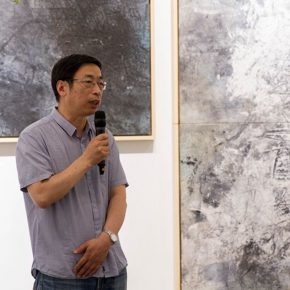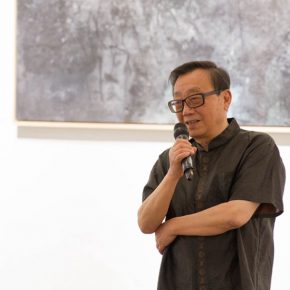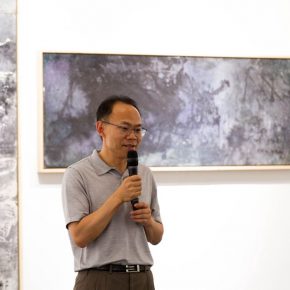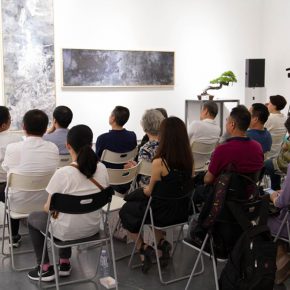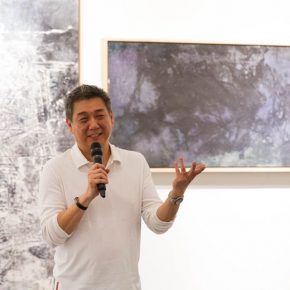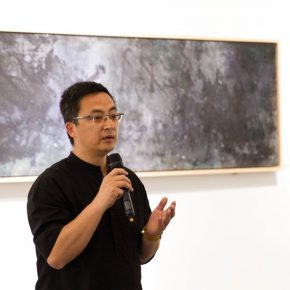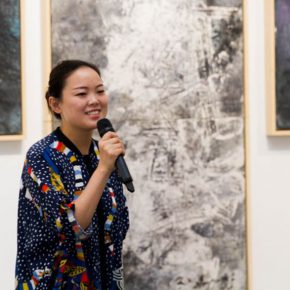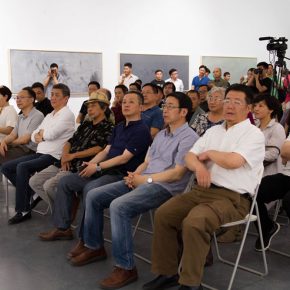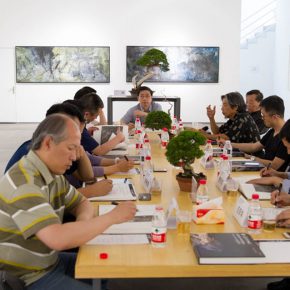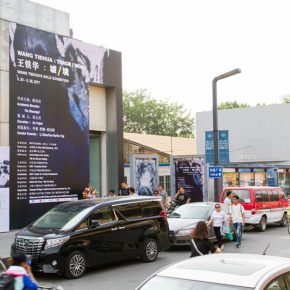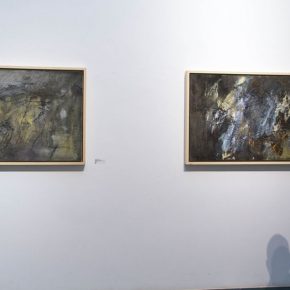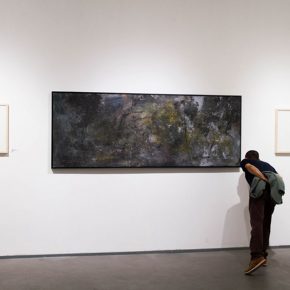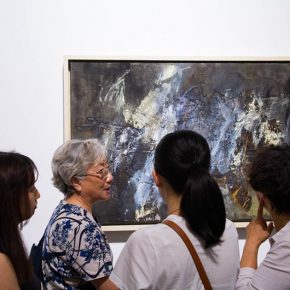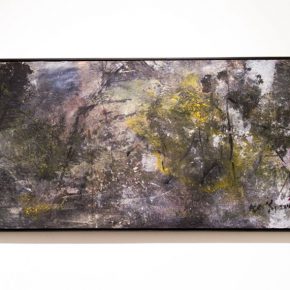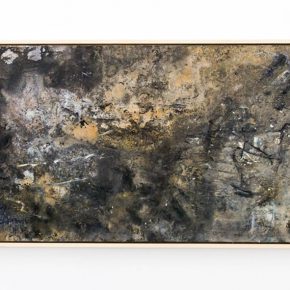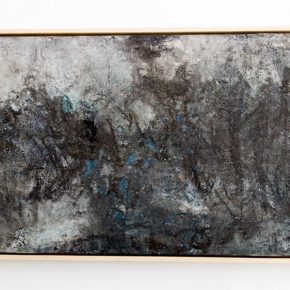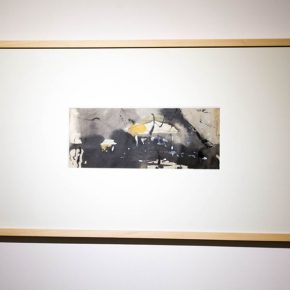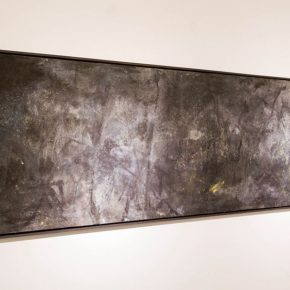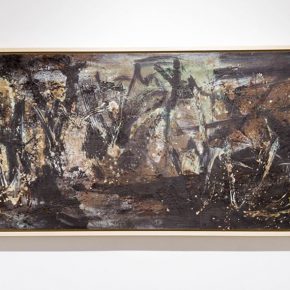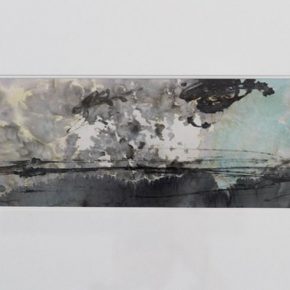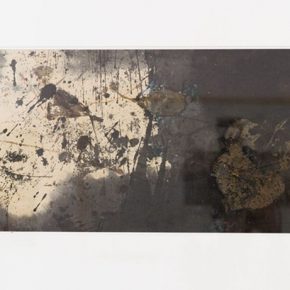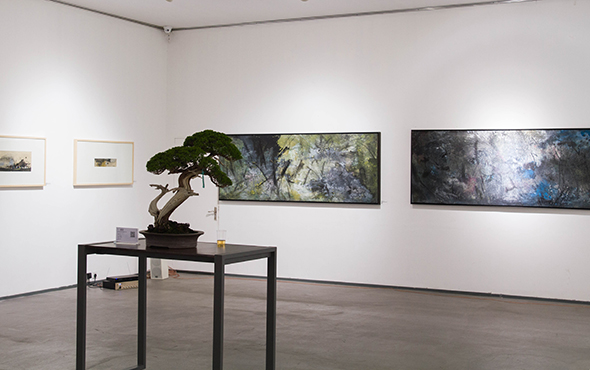
On May 20, 2017, “Trace/Mono” Wang Tiehua's solo exhibition opened at SZ Art Center, the exhibition is the first public appearance of Wang Teihua as an artist which exhibits the oil paintings, mixed media, ink and spatial installation recently created by Wang Tiehua, which collectively reflects his problematic consciousness and cultural standpoint, as well as the thinking and experiments that contain his thoughts and experiments in Chinese & Western art and philosophy, which present a current value and significance that can’t be ignored. The exhibition was organized by the Graduate School of CAFA, co-organized by the Center for Teacher Development of CAFA, with Prof. Yin Shuangxi serving as the academic chair, and Ge Yujun, Director of the Department of Teaching of CAFA serving as curator.
Although it is the first solo exhibition of Wang Tiehua’s artistic career, Prof. Yin Shuangxi has given an affirmation to the effects of the exhibition and creation. He delivered a speech at the opening ceremony of the exhibition and said that some of the art creations were surprising while the majority of the works were grand talents that are maturing slowly, but the most important thing was that the growth of the artist during working hours embodied the final quality of his work, Wang Tiehua has painstakingly spent many years on the research, which is precious in this impetuous era. As a Ph.D in architecture, Wang Tiehua has a broad study in Chinese philosophy and ancient painting theory, and penetrates into the traditional field of painting, showcasing a freedom that straightforwardly points to the mind. Prof. Zhang Baowei from the School of Architecture, CAFA is Wang Tiehua’s mentor, and they are both friends and teachers for each other because of the common specialisms and hobbies. Zhang Baowei reviewed these works as the performance of Wang Tiehua’s comprehensive artistic accomplishments in the fields of classical painting, literature and artistic appreciation.
The exhibition is themed on the “Trace/Mono”, which indicates the overall appearance and status of the artist’s creation. Wang Tiehua believes that the “Trace” is a residue of the time, while “Mono” is the simultaneous presence of multiple-time and body, under the care of “Trace/Mono”, the material traces become the process and carrier of the reading and salvation for time. It is through the confrontation between body and time that the “past” and “future” simultaneously appear from the “absence”. “Trace” neither denies the “past” in the concept, nor gives up creating the “future”, for “mono” it is indifferent when the time faces the fragment of history itself. The emergence of “/” is a sign of binaryand non-confrontation, which is a nameless zone with the combination of “meaning” and “meaninglessness”, so that “Mono” is also far away from the classical pure “realm” in this context.
Wang Tiehua’s art is a kind of self-expression with the infiltration of traditions, although it has the interest of ink and painting, although it seems to have an interest in ink painting, his works are different from the contemporary ink painting that is familiar to people, in order to express complex feelings from the heart, Wang Tiehua has even been far away from the composition and techniques of ink painting that people are accustomed to. His work is the painting of mixed media that wanders between the consciousness of the “ink and wash”, and he uses a variety of materials on different substrates, which have never been manacled by the category of painting, but are wantonly expressed. In Wang Tiehua’s works, it reflects the balance between the image and the abstract, running a brush to portray the main image like writing Chinese calligraphy, together with the abstract color of the background that then forms an harmonious echo, the linear expression in the center of the image makes the implication of music in the works gradually increase to become the subject with the feeling of a melody. Of course, Wang Tiehua’s art is also difficult to be defined as a pure abstract painting, the works reveal the traditional language of brush & ink and the free modern composition and develops the personalized art language in the exclusive field of development, thus expressing his unique attitude towards things. As the curator, Ge Yujun addressed the opening ceremony and reviewed that Wang Tiehua was engaged in the research and work in the field of architecture, and that he was painstakingly studying ancient gardens during the period as a doctoral candidate, and painting is only one of his amateur states,while cutting into the classical culture, integrating ink & wash and contemporary mixed media, his creative path also provides a path and possibility for thinking of how traditional Chinese thought intervenes in contemporary art.
On the opening day of the exhibition, an academic discussion was also held in the exhibition hall, invited critics Yin Shuangxi, Niu Hongbao, Deng Pingxiang, Liu Libin, Ge Yujun, Guo Hongmei, Chen Jianlan, Xu Zilin, Xu Bocheng, Cao Tiancheng and Zhang Yinghui carried out an in-depth analysis and exchange on Wang Tiehua’s art, a clearer understanding and interpretation of his art was formed and an enlightenment for the future road of art was also proposed.
The exhibition continues to May 26.
Text by Zhang Wenzhi, translated by Chen Peihua and edited by Sue/CAFA ART INFO
Photo by the organizer
About the Artist:
Wang Tiehua: Ph.D., graduated from CAFA in 2011, and remained on the school staff after graduation, currently Director of the Center for Architecture and Cultural Studies, CAFA, a researcher and professor level senior architect. He has multiple identities including architect, painter and art historian. The publications include: “Dwelling of the Owner: Research on Classical Garden Culture in the Horizon of ‘Seeing’”, “Trace/Mono – Wang Tiehua Works of Painting, and so on. Selected architectural works: Yanjiao campus of CAFA, World Chinese Collection Museum, Linquan Innhouse Meditation Research Center in Dalian, Huari Convention and Exhibition Center in Langfang, Leqing Administrative Center. His painting art focuses on the exploration in the tradition, “the use of changing lines and ethereal ink to render and construct the visual space in the spiritual dream”, which can be regarded as contemporary “literati painter”, integrating the rational and intuition.


